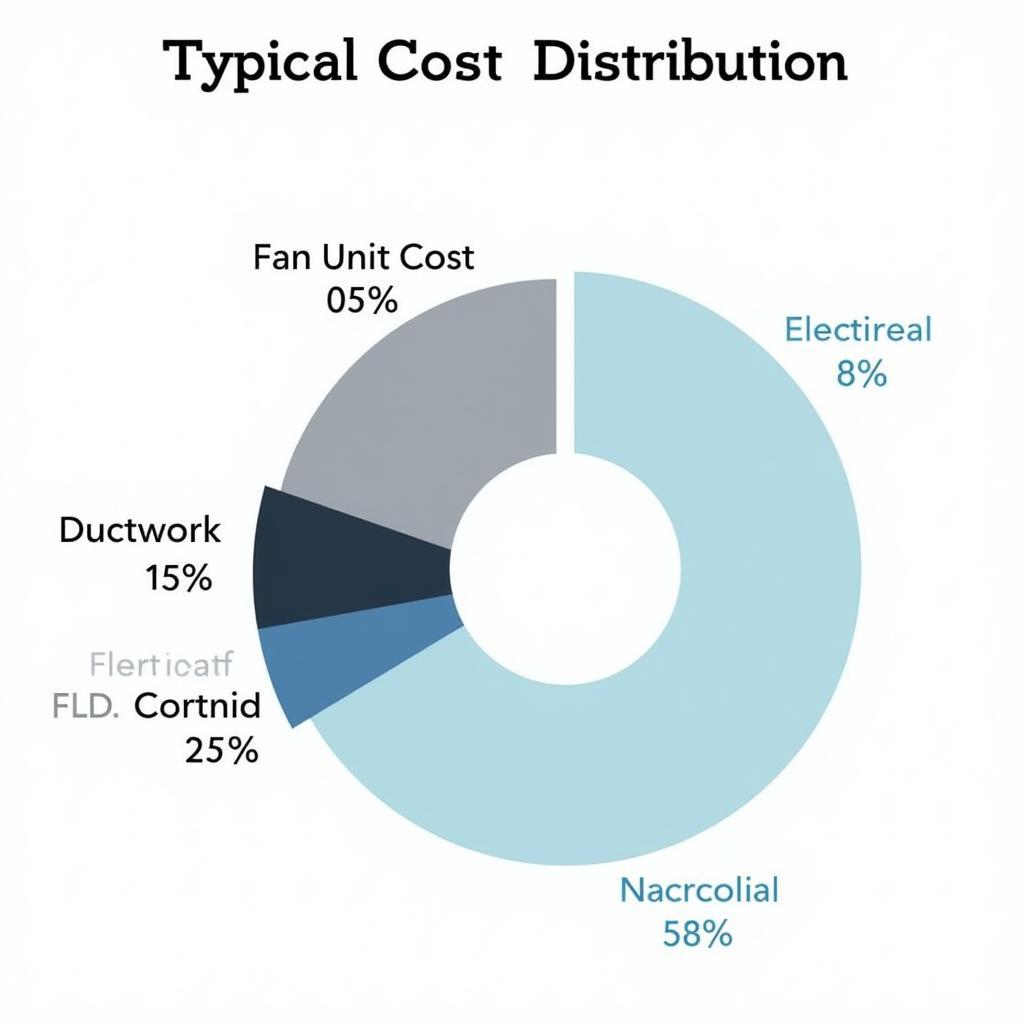Understanding the cost of industrial fans goes beyond simply looking at the price tag. Several factors influence the final cost, from the type and size of the fan to the materials used and installation requirements. This guide delves into the intricacies of industrial fan pricing, providing you with valuable insights to make informed decisions for your specific needs.
Factors Influencing Industrial Fan Cost
Fan Type and Size
Different applications require specific types of industrial fans, each with varying costs.
- Centrifugal fans, known for their high pressure capabilities, tend to be more expensive than axial fans due to their complex design and robust construction.
- Axial fans, commonly used for general ventilation, are generally more affordable.
Within each fan type, size plays a significant role in determining the price. Larger fans require more materials, more powerful motors, and often, more complex installation processes, all contributing to a higher overall cost.
Material Selection
The materials used in the fan’s construction significantly influence its price and longevity.
- Stainless steel fans, known for their corrosion resistance and durability, come at a premium cost compared to fans made from galvanized steel or aluminum.
- Specialized coatings, such as those for high-temperature applications or corrosive environments, also add to the overall expense.
Choosing the right material depends on the intended environment and operational demands, balancing cost with long-term performance and maintenance needs.
Motor Specifications
The motor is a crucial component of an industrial fan, and its specifications directly impact the cost.
- Higher horsepower motors required for larger fans or those operating at higher speeds come at a higher price.
- Energy-efficient motors, while initially more expensive, can lead to significant savings on operating costs in the long run.
Installation Requirements
The complexity of the installation process can influence the overall project cost.
- Rooftop installations, for instance, often involve additional labor and equipment costs compared to simpler floor-mounted installations.
- Ductwork, electrical wiring, and control systems also contribute to the final price.
Considering these factors during the planning phase can help you anticipate and manage the overall expenses.
Estimating Industrial Fan Costs
 Industrial Fan Cost Breakdown
Industrial Fan Cost Breakdown
While providing an exact cost without considering specific project details is impossible, here’s a general cost range for different industrial fan types:
- Small Axial Fans: $500 – $2,000
- Large Axial Fans: $2,000 – $10,000+
- Small Centrifugal Fans: $1,000 – $5,000
- Large Centrifugal Fans: $5,000 – $50,000+
Expert Insight: “Investing in a high-quality, energy-efficient industrial fan might seem expensive upfront. However, the long-term savings on energy consumption and reduced maintenance costs often outweigh the initial investment.” – John Miller, HVAC Engineer
Conclusion
Determining the cost of an industrial fan is a multifaceted process that requires careful consideration of various factors. By understanding the influence of fan type, size, materials, motor specifications, and installation requirements, you can effectively estimate the overall expenses. Consulting with experienced HVAC professionals and obtaining detailed quotes from reputable suppliers will ensure you make informed decisions that meet your specific needs and budget.
Frequently Asked Questions
What is the average lifespan of an industrial fan?
The average lifespan of an industrial fan varies depending on factors like usage, maintenance, and environmental conditions. However, with proper care, a well-maintained industrial fan can last anywhere from 15 to 20 years or even longer.
What are the benefits of energy-efficient industrial fans?
Energy-efficient industrial fans offer significant long-term cost savings by consuming less electricity. They also contribute to a reduced carbon footprint and often operate quieter, improving the overall work environment.
Can I install an industrial fan myself?
While it might be tempting to install an industrial fan yourself, it’s highly recommended to hire experienced professionals. Incorrect installation can lead to safety hazards, reduced efficiency, and potential damage to the fan or surrounding infrastructure.
For further information and support regarding industrial fan brands, troubleshooting issues like a laptop cooling fan not working, or exploring specific fan types such as centrifugal plug fans, visit our website or contact our expert team.
Need assistance? Contact us:
Phone: 0903426737
Email: fansbongda@gmail.com
Address: Tổ 9, Khu 6, Phường Giếng Đáy, Thành Phố Hạ Long, Giếng Đáy, Hạ Long, Quảng Ninh, Việt Nam.
We’re here to help 24/7!


